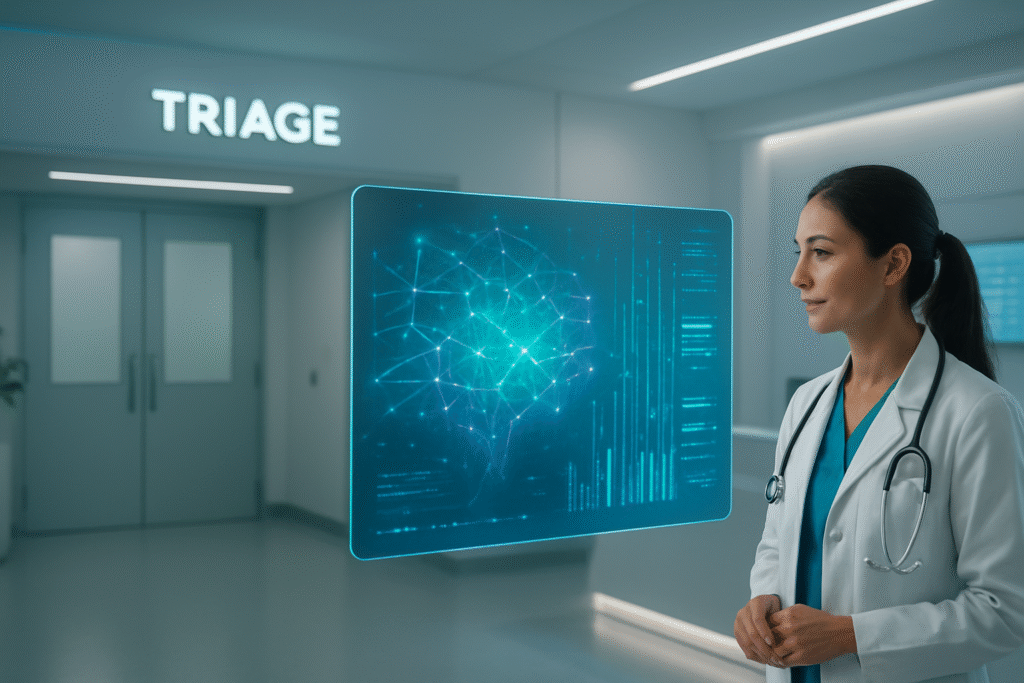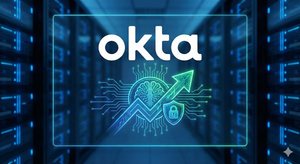
In a monumental shift for the healthcare industry, machine learning (ML) applications are rapidly being integrated into triage systems, promising to redefine how patients are prioritized and managed. As of October 2025, these intelligent systems are moving beyond experimental phases, demonstrating significant immediate impact in alleviating emergency department (ED) overcrowding, enhancing patient safety, and optimizing the allocation of crucial medical resources. This transformative wave of AI is poised to usher in an era of more precise, efficient, and equitable patient care, addressing long-standing systemic challenges.
The immediate significance of this integration is profound. ML models are proving instrumental in predicting patient outcomes, reducing mis-triage rates, and providing real-time clinical decision support. From AI-powered chatbots offering 24/7 virtual triage to sophisticated algorithms identifying at-risk populations from vast datasets, the technology is streamlining initial patient contact and ensuring that critical cases receive immediate attention. This not only improves the quality of care but also significantly reduces the burden on healthcare professionals, allowing them to focus on complex medical interventions rather than administrative tasks.
The Technical Backbone: How AI Elevates Triage Beyond Human Limits
The technical underpinnings of machine learning in healthcare triage represent a significant leap from traditional, human-centric assessment methods. As of October 2025, sophisticated ML models, primarily leveraging supervised learning, are processing vast, heterogeneous patient data in real-time to predict acuity, risk of deterioration, and resource requirements with unprecedented accuracy. These systems integrate diverse data points, from vital signs and medical history to unstructured clinician notes, utilizing Natural Language Processing (NLP) to extract critical insights from human language.
Specific algorithms are at the forefront of this revolution. Decision tree-based models, such as Random Forest and Extreme Gradient Boosting (XGBoost), have demonstrated superior accuracy in distinguishing case severity and predicting triage levels, often surpassing traditional expert systems. Random Forest, for instance, has shown high precision and specificity in classification tasks. XGBoost has achieved high sensitivity and overall prediction accuracy, particularly in forecasting hospital admissions. Furthermore, advanced neural networks and deep learning architectures are proving superior in identifying critically ill patients by interpreting a multitude of different data points simultaneously, uncovering subtle risk patterns that might elude human observation. Tools like TabTransformer are also gaining traction for their exceptional accuracy, even with varying data completeness in digital triage interviews.
This ML-powered approach fundamentally differs from traditional triage, which relies heavily on human judgment, standardized checklists like the Emergency Severity Index (ESI), and basic vital signs. While traditional methods are established, they are prone to subjectivity, variability due to clinician fatigue or bias, and limited data processing capacity. AI-driven triage offers a more objective, consistent, and comprehensive assessment by analyzing magnitudes more data points simultaneously. For example, ML models can achieve up to 75.7% accuracy in predicting ESI acuity assignments, significantly outperforming human triage nurses who often score around 59.8%. This enhanced predictive power not only improves accuracy but also accelerates the triage process, optimizing resource allocation and reducing unnecessary admissions to intensive care units.
Initial reactions from the AI research community and industry experts, as of October 2025, are largely optimistic, recognizing the transformative potential for improved patient outcomes, enhanced efficiency, and reduced clinician workload. Experts highlight the ability of Large Language Models (LLMs) to automate clinical documentation and generate actionable insights, freeing up medical staff. However, significant concerns persist, primarily around algorithmic bias, the "black box" problem of explainability (with 67% of healthcare AI models lacking transparency), and accountability for AI-driven errors. Data privacy and security, along with the challenge of integrating new AI tools into existing Electronic Health Record (EHR) systems, also remain critical areas of focus. The prevailing consensus emphasizes a "human-in-the-loop" model, where AI augments human expertise rather than replacing it, ensuring ethical oversight and clinical validation.
Shifting Tides: AI's Reshaping of the Healthcare Tech Landscape
The burgeoning integration of machine learning into healthcare triage is profoundly reshaping the competitive dynamics for AI companies, tech giants, and startups alike. With healthcare AI spending projected to reach $1.4 billion in 2025—nearly tripling 2024's investment—the market is a hotbed of innovation and strategic maneuvering. While startups currently capture a dominant 85% of this spending, established Electronic Health Record (EHR) companies like Epic and tech behemoths such as Google (NASDAQ: GOOGL), Microsoft (NASDAQ: MSFT), NVIDIA (NASDAQ: NVDA), and IBM (NYSE: IBM) are leveraging their extensive infrastructure and market reach to either develop proprietary AI offerings or forge strategic partnerships.
Several companies stand to benefit immensely from this development. In diagnostic and imaging AI, Aidoc and Qure.ai are providing real-time radiology triage and accelerated diagnostic assistance, with Qure.ai boasting 19 FDA clearances and impacting over 34 million lives annually across 4800+ sites. Viz.ai focuses on rapid stroke diagnosis, while Butterfly Network Inc. (NYSE: BFLY) offers AI-powered handheld ultrasound devices. In the realm of conversational AI and virtual assistants, companies like Mediktor, Teneo.ai (which leverages Google Gemini for advanced Voice AI), and Avaamo are streamlining patient initial assessments and appointment scheduling, significantly reducing wait times and improving patient flow. Hinge Health recently launched "Robin," an AI care assistant for pain flare-ups.
Workflow automation and clinical documentation AI are also seeing significant disruption. Abridge, now valued at $5.3 billion, uses ambient AI to convert doctor-patient conversations into real-time clinical notes, achieving over 80% reduction in after-hours work for clinicians. Its deployment across Kaiser Permanente's 40 hospitals marks one of the fastest technology implementations in the healthcare giant's history. Augmedix (NASDAQ: AUGX) offers a similar AI platform for ambient documentation. Furthermore, health systems like Risant Health are directly benefiting, with their "Intelligent Triage" tool reducing unnecessary emergency room encounters at Geisinger by approximately 20%.
The competitive implications are stark. The market favors solutions that are production-ready, scalable, and demonstrate clear Return on Investment (ROI). Companies offering quick wins, such as significant reductions in documentation time, are gaining substantial traction. Strategic partnerships, exemplified by Abridge's integration with Epic, are proving crucial for widespread adoption, as they mitigate the complexities of integrating into existing healthcare IT environments. Specialization and domain expertise are also paramount; generic AI solutions are less effective than those tuned for specific medical contexts like emergency care or particular diseases.
This wave of AI is poised for significant market disruption. AI systems are consistently outperforming traditional triage methods, achieving higher accuracy rates (e.g., 75.7% for AI vs. 59.8% for nurses) and reducing critical patient mis-triage rates. This leads to redefined triage processes, improved efficiency (up to 30% reduction in patient wait times), and a substantial decrease in administrative burden, potentially reducing charting time by 43% by 2025. However, challenges persist, including data quality issues, algorithmic bias, lack of clinician trust, and the "black-box" nature of some AI models, all of which hinder widespread adoption. Companies that can effectively address these barriers, demonstrate regulatory acumen (like Qure.ai's numerous FDA clearances), and prioritize Explainable AI (XAI) and seamless workflow integration will secure a strategic advantage and lead the charge in this rapidly evolving healthcare landscape.
Beyond the Clinic Walls: AI Triage's Broader Societal and Ethical Implications
The integration of machine learning into healthcare triage systems signifies a profound shift with far-reaching implications for society and the broader healthcare landscape. This innovation is not merely an incremental improvement but a paradigm shift aimed at addressing the increasing demands on strained healthcare systems, which frequently grapple with overcrowding, limited resources, and inconsistencies in patient prioritization. As of October 2025, ML in triage stands as a pivotal development alongside other groundbreaking AI applications in medicine, each contributing to a more efficient, accurate, and potentially equitable healthcare future.
The broader significance lies in ML's capacity to enhance triage precision and clinical decision-making. By rapidly analyzing vast, multimodal patient data—including vital signs, medical history, symptoms, lab results, and imaging—AI algorithms can identify subtle patterns often missed by human assessment. This leads to more accurate patient prioritization, reduced instances of under- or over-triaging, and improved predictive accuracy for critical outcomes like the need for ICU admission or hospitalization. Studies indicate that ML models consistently demonstrate superior discrimination abilities compared to conventional triage systems, contributing to streamlined workflows, reduced wait times (potentially by as much as 40%), and optimized resource allocation in emergency departments. This efficiency ultimately improves patient outcomes, reduces mortality and morbidity, and enhances the overall patient experience. Furthermore, by automating aspects of triage, ML can alleviate the workload and burnout among healthcare professionals, fostering a better work environment.
However, the transformative potential of AI in triage is tempered by significant ethical and practical concerns, primarily algorithmic bias and data privacy. Algorithms, trained on historical data, can inadvertently perpetuate and amplify existing societal biases related to race, gender, or socioeconomic status. If past triage practices were discriminatory, the AI will likely inherit these biases, leading to unfair treatment and exacerbating health disparities. The "black box" nature of many advanced AI models further complicates this, making it difficult for clinicians to understand decision-making processes, identify biases, or correct errors, which eroding trust and critical oversight. Studies in 2025 suggest that human oversight might not be sufficient, as clinicians can over-trust algorithms once their efficiency is proven.
Data privacy and security also present formidable challenges. ML systems require vast quantities of sensitive patient data, increasing the risk of misuse or breaches. Healthcare data, being highly valuable, is a prime target for cyberattacks, and interconnected AI platforms can expose vulnerabilities across storage, transmission, and processing. Adhering to varying international regulations like HIPAA and GDPR, ensuring informed consent, and establishing clear data ownership are critical ethical obligations. Beyond bias and privacy, concerns about accountability for AI-driven errors and potential job displacement for triage nurses also warrant careful consideration, though the current consensus favors AI as an augmentation tool rather than a replacement for human expertise.
Compared to other AI breakthroughs in healthcare, ML in triage is part of a larger revolution. Generative AI is accelerating drug discovery, while AI for medical diagnosis and imaging—with tools cleared for clinical use in breast cancer screening and stroke detection—is enhancing diagnostic accuracy and speed. AI agents are evolving to manage entire patient journeys, from symptom assessment to follow-up care. Remote healthcare, virtual hospitals, and personalized medicine are also being revolutionized by AI, offering continuous monitoring, tailored treatments, and expanded access to care. While recent research (October 2025) indicates that human doctors and nurses generally outperform AI (e.g., ChatGPT 3.5) in overall triage accuracy in emergency departments (70.6% for doctors, 65.5% for nurses, vs. 50.4% for AI), AI demonstrates superior capability in recognizing the most critical, life-threatening cases. This underscores the current role of AI as a powerful decision-support tool, augmenting human capabilities, particularly in high-pressure scenarios and for less experienced staff, rather than an infallible replacement for clinical judgment.
The Road Ahead: Charting the Future of AI in Healthcare Triage
The trajectory of machine learning in healthcare triage points towards an increasingly integrated and sophisticated future, promising to fundamentally reshape patient care in both the near and long term. As of October 2025, experts anticipate a rapid evolution, driven by advancements in AI capabilities and the pressing need for more efficient healthcare delivery.
In the near term (1-3 years), we can expect to see significantly enhanced Clinical Decision Support (CDS) systems, seamlessly integrated with Electronic Health Records (EHRs). These systems will provide real-time suggestions, interpret complex patient data faster, and assist clinicians in prioritizing serious cases, thereby reducing waiting times in emergency departments. Initiatives like Johns Hopkins' AI-enabled TriageGO, which objectively estimates patient risk for critical outcomes, exemplify this shift. Widespread adoption of advanced AI agents and medical chatbots will also become commonplace, offering 24/7 initial symptom assessment and guiding patients to appropriate care levels, thereby reducing unnecessary emergency room visits. Furthermore, automated administrative tasks, particularly through AI scribes that convert patient-provider conversations into structured clinical notes, are set to significantly reduce clinician burnout, a critical issue in healthcare. The NHS, for instance, has already designated AI-powered medical scribes as regulated medical devices.
Looking further ahead (5-10+ years), the vision includes a profound shift towards precision medicine, with AI systems enabling preventative, personalized, and data-driven disease management. This will involve individualized care plans, proactive patient outreach, and even the use of "AI digital consults" on "digital twins" of patients—virtual models where clinicians can test interventions like cancer drugs before administering them to the actual patient. The long-term goal is a fully connected and augmented care ecosystem, linking clinics, hospitals, social care, patients, and caregivers through interoperable digital infrastructure, leveraging passive sensors and ambient intelligence for continuous remote monitoring and timely interventions. This future also envisions globally democratized data assets, leveraging vast amounts of human knowledge to deliver a common high standard of care and enhance health equity worldwide.
However, realizing this ambitious future hinges on addressing several critical challenges. Ethical considerations remain paramount, particularly concerning algorithmic bias. If AI models are trained on historical data reflecting past discriminatory practices, they can perpetuate and amplify existing health disparities. Ensuring transparency in "black box" AI models, protecting patient privacy through robust data protection measures and enhanced consent mechanisms, and establishing clear accountability for AI-driven decisions are non-negotiable. The lack of human empathy in AI-involved care also remains a concern for stakeholders. Technically, issues like data quality and access, alongside the need for interoperable IT systems and robust infrastructure, must be resolved. Organizational capacity and workforce readiness are equally crucial, requiring effective training and a culture that embraces AI as an augmentation tool rather than a threat to clinician autonomy. Finally, agile yet robust regulatory frameworks are essential to ensure the continuous monitoring, certification, and safe deployment of AI systems.
Experts, as of October 2025, are cautiously optimistic, viewing AI not as a luxury but a "demographic and economic necessity" given aging populations and complex medical needs. They predict continued significant investment growth in healthcare AI, with projections suggesting an increase from approximately $20 billion in 2024 to $150 billion over the next five years. The consensus is clear: AI will augment, not replace, clinicians, freeing them from administrative burdens and allowing them to focus on complex patient care. The next decade will focus on extracting profound insights and value from digitized health records to drive better clinical outcomes, rather than just efficiency. The emergence of "responsible-AI playbooks" and increased regulatory scrutiny are also anticipated, ensuring ethical deployment. While concerns about job automation exist, experts predict AI will create millions of new roles in healthcare, particularly for diagnostic AI analysts and healthcare AI system administrators, underscoring a future where humans and AI collaborate to deliver superior patient care.
A New Horizon for Healthcare: AI's Enduring Legacy
The application of machine learning in optimizing healthcare triage systems represents a pivotal moment in the evolution of artificial intelligence and its impact on human society. As of October 2025, this integration is not merely a technological upgrade but a fundamental re-imagining of how healthcare is accessed, delivered, and managed. The key takeaways underscore AI's ability to significantly enhance the accuracy and efficiency of patient prioritization, identify critical cases with greater precision, and support less experienced medical staff, ultimately leading to improved patient outcomes and a more streamlined healthcare experience.
In the annals of AI history, the successful deployment of ML in healthcare triage will be remembered as a critical step in moving AI from theoretical potential to tangible, life-saving application in complex, high-stakes environments. It highlights AI's core strengths in processing vast, multimodal datasets and recognizing intricate patterns beyond human cognitive capacity, pushing the boundaries of what intelligent systems can achieve in real-world scenarios. This development also reinforces the growing paradigm of human-AI collaboration, emphasizing that while AI augments human capabilities, human judgment, empathy, and ethical oversight remain indispensable.
The long-term impact of this trajectory is a healthcare system that is more proactive, personalized, and preventative. We are moving towards an era of precision medicine, where individualized care plans, continuous remote monitoring, and intelligent telehealth become the norm. AI promises to democratize access to high-quality care, especially in underserved regions, and standardize diagnostic and therapeutic approaches globally. While clinical roles will undoubtedly evolve, focusing more on complex cases and patient interaction, the overarching goal remains to reduce inefficiency, enhance patient safety, and improve the experience for both caregivers and patients throughout their healthcare journey.
In the coming weeks and months, several key trends will be crucial to monitor. We should watch for the continued advancement of AI models, aiming for even higher accuracy and reliability across diverse clinical scenarios, alongside deeper integration with existing EHR systems. The focus on developing robust, diverse training data to mitigate algorithmic bias will intensify, as will the evolution of ethical AI frameworks and regulatory guidelines to ensure transparency, accountability, and patient privacy. The growth of AI agents and conversational interfaces for patient engagement, coupled with predictive analytics for population health and resource management, will further define this landscape. As healthcare organizations accelerate their adoption of AI, the "messy reality" of integrating these tools into existing workflows will demand phased implementations, comprehensive staff training, and continuous validation. The promise is immense, but the journey requires diligent attention to both technological innovation and the profound ethical and practical considerations that accompany it.
This content is intended for informational purposes only and represents analysis of current AI developments.
TokenRing AI delivers enterprise-grade solutions for multi-agent AI workflow orchestration, AI-powered development tools, and seamless remote collaboration platforms.
For more information, visit https://www.tokenring.ai/.





